Gas fireplaces have become a popular choice for homeowners due to their efficiency, ease of use, and aesthetic appeal. However, the type of venting system used in a gas fireplace is crucial for its performance, safety, and installation flexibility. In today’s article, we will talk about different types of gas fireplace venting, their benefits, installation processes, maintenance, design considerations, and more. Additionally, we will discuss common mistakes to avoid and answer frequently asked questions about gas fireplace venting.
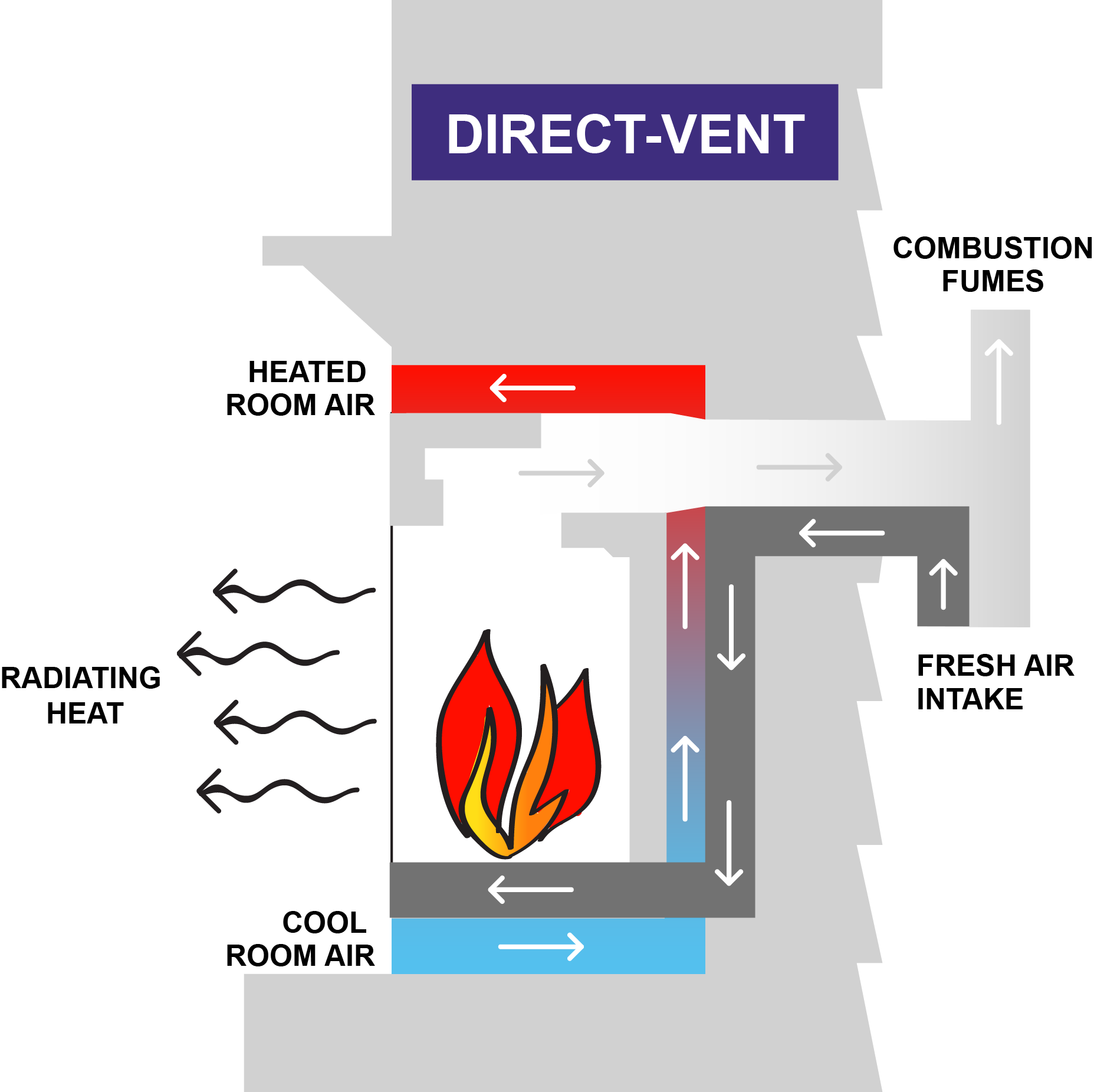
Introduction to Gas Fireplace Venting
Importance of Venting
Venting is a critical aspect of gas fireplaces as it ensures the safe and efficient operation of the fireplace. Proper venting allows combustion by-products, such as carbon monoxide and water vapor, to be expelled from the home, maintaining indoor air quality and preventing hazardous conditions. The choice of venting system impacts the fireplace’s efficiency, installation options, and overall performance.
Types of Gas Fireplaces
Gas fireplaces can be categorized into three main types based on their venting systems: direct vent, natural vent (also known as B-vent), and ventless (also known as vent-free). Each type has its own set of advantages and disadvantages, making it important to understand their differences to make an informed decision.
Factors Influencing Venting Choices
Several factors influence the choice of venting system for a gas fireplace, including the installation location, building structure, budget, and personal preferences. Homeowners should consider these factors carefully to ensure that the selected venting system meets their needs and complies with local building codes and regulations.
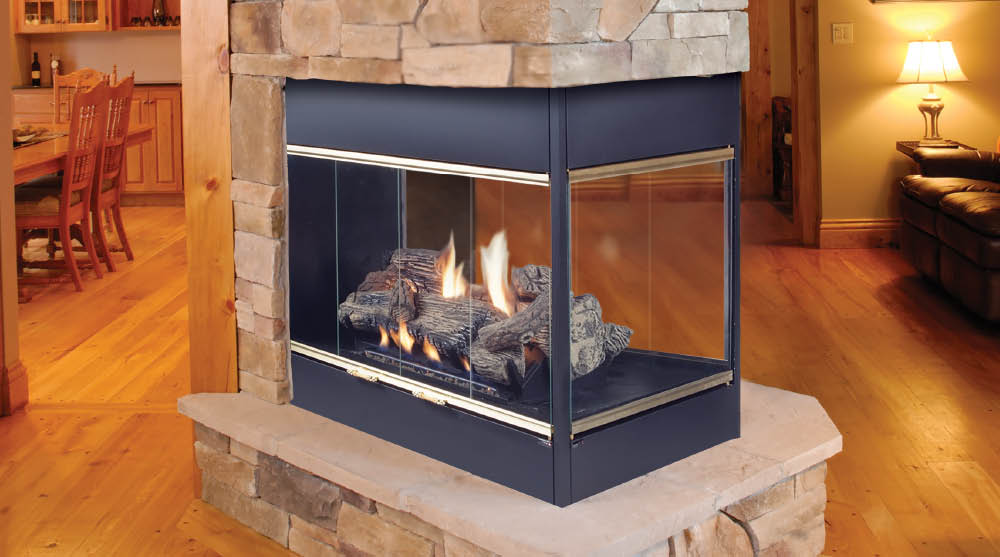
Overview of Venting Components
A gas fireplace venting system typically consists of several components, including the vent pipe, termination cap, and vent collar. These components work together to facilitate the safe expulsion of combustion by-products from the fireplace to the exterior of the home. Understanding these components is essential for proper installation and maintenance.
Safety Considerations
Safety is paramount when it comes to gas fireplace venting. Improper venting can lead to the accumulation of harmful gases, such as carbon monoxide, posing serious health risks. Homeowners should ensure that their venting system is installed and maintained correctly, following manufacturer guidelines and local building codes.
Energy Efficiency
The type of venting system used in a gas fireplace also affects its energy efficiency. Direct vent fireplaces are known for their high efficiency as they use outside air for combustion, reducing heat loss and improving indoor air quality. Understanding the efficiency implications of each venting system can help homeowners make an environmentally conscious and cost-effective choice.

Direct Vent Gas Fireplaces
How Direct Vent Works
Direct vent gas fireplaces use a sealed combustion system that draws air from outside the home for combustion and expels exhaust gases back outside. This system consists of two pipes, one for intake and one for exhaust, which can be co-axial (one pipe within another) or separate pipes. The sealed system ensures that indoor air quality is maintained and heat loss is minimized.
Benefits of Direct Vent
Direct vent fireplaces offer several benefits, including high energy efficiency, improved indoor air quality, and installation flexibility. Because they use outside air for combustion, they do not consume indoor oxygen, making them a safe option for tightly sealed homes. Additionally, the sealed system prevents drafts and heat loss, resulting in better heating efficiency.
Installation Options
Direct vent fireplaces can be installed in various locations within the home, including interior walls, exterior walls, and even below ground level. They can vent horizontally through an exterior wall or vertically through the roof, providing installation flexibility. This versatility makes direct-vent fireplaces a popular choice for both new constructions and renovations.

Maintenance Requirements
Maintaining a direct vent fireplace involves regular cleaning of the glass front, inspecting and cleaning the venting system, and checking for any signs of wear or damage. Homeowners should follow the manufacturer’s maintenance guidelines and schedule annual inspections by a professional to ensure safe and efficient operation.
Common Applications
Direct vent fireplaces are suitable for a wide range of applications, including living rooms, bedrooms, and basements. Their versatility and safety features make them ideal for both residential and commercial settings. They are also available in various styles and sizes to match different interior designs and heating needs.
Cost Considerations
The cost of installing a direct vent fireplace can vary based on the complexity of the installation, the type of fireplace, and the venting configuration. While direct vent fireplaces may have a higher initial cost compared to other types, their energy efficiency and safety features can result in long-term savings on heating bills and maintenance.

Interesting Articles You May Want to Check:
- Gas Fireplace Pilot Light Will Not Stay Lit
- Gas Fireplace with Bookshelves
- Natural Gas Fireplace Regulator
- Vented Gas Fireplace Heater
- Gas Fireplace Inserts with Blower Fan

Natural Vent (B-Vent) Gas Fireplaces
How Natural Vent Works
Natural vent gas fireplaces, also known as B-vent fireplaces, use the natural buoyancy of hot air to expel combustion gases through a vertical flue that extends through the roof. These fireplaces draw air from the room for combustion and rely on the chimney effect to vent exhaust gases outside. The flue must extend vertically to ensure proper draft and venting.
Benefits of Natural Vent
Natural vent fireplaces offer a traditional fireplace appearance with a visible flame and the sound of crackling logs. They are relatively easy to install in homes with existing chimneys and can be a cost-effective option for homeowners looking to replace a wood-burning fireplace. B-vent fireplaces are also available in a variety of styles and sizes.
Installation Considerations
Installing a natural vent fireplace requires a vertical flue that extends through the roof, which can limit installation options to locations with existing chimneys or where a new chimney can be constructed. The installation process involves ensuring proper clearances and sealing around the flue to prevent drafts and heat loss.
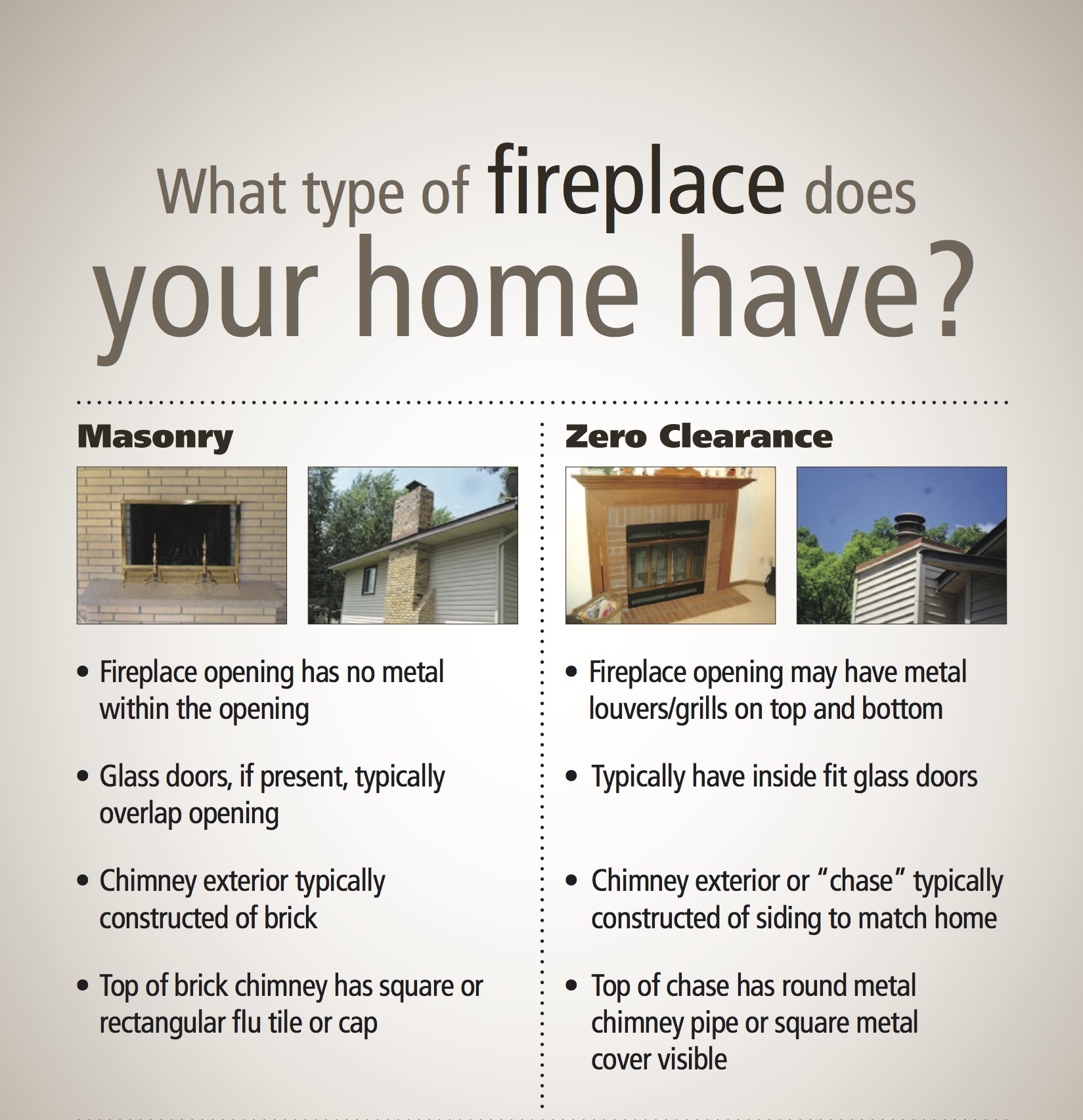
Maintenance Needs
Regular maintenance of a natural vent fireplace includes cleaning the flue, inspecting for blockages, and checking for any signs of wear or damage. The flue should be cleaned annually to remove soot and debris, and the fireplace components should be inspected for proper operation. Professional inspections are recommended to ensure safe and efficient performance.
Common Applications
Natural vent fireplaces are commonly used in homes with existing chimneys or in areas where a vertical flue can be easily installed. They are often found in living rooms, family rooms, and other central locations where they can serve as a focal point and provide supplemental heat. Their traditional design makes them a popular choice for classic and rustic interiors.
Cost Considerations
The cost of installing a natural vent fireplace can vary depending on whether an existing chimney is used or a new chimney needs to be constructed. While B-vent fireplaces are generally less expensive than direct vent systems, the need for a vertical flue can add to the installation cost. Homeowners should also consider the ongoing maintenance costs associated with cleaning the flue and inspecting the fireplace.
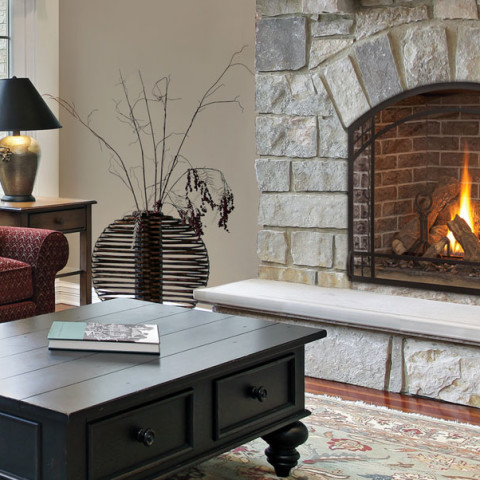
Ventless (Vent-Free) Gas Fireplaces
How Ventless Fireplaces Work
Ventless gas fireplaces, also known as vent-free fireplaces, do not require any external venting. They use a highly efficient combustion process that produces minimal by-products, allowing them to operate safely without a flue or chimney. These fireplaces draw air from the room for combustion and release heat and combustion by-products back into the room.
Benefits of Ventless Fireplaces
Ventless fireplaces offer several benefits, including ease of installation, high efficiency, and flexibility in placement. Because they do not require venting, they can be installed in virtually any room, making them an ideal choice for apartments, condos, and other spaces where venting options are limited. They also provide instant heat and are highly efficient, converting nearly all the fuel into usable heat.
Installation Flexibility
The lack of a venting requirement allows ventless fireplaces to be installed in a wide variety of locations, including interior walls, corners, and even as freestanding units. This flexibility makes them a popular choice for supplemental heating in bedrooms, bathrooms, and other areas where traditional vented fireplaces would be impractical.

Safety Considerations
While ventless fireplaces are designed to operate safely, they do release combustion by-products, such as carbon monoxide and water vapor, into the room. To ensure safe operation, these fireplaces are equipped with oxygen depletion sensors (ODS) that automatically shut off the fireplace if oxygen levels drop below a safe threshold. It is important to follow the manufacturer’s guidelines and ensure proper ventilation in the room.
Common Applications
Ventless fireplaces are commonly used in areas where venting is not feasible, such as apartments, condos, and rooms without exterior walls. They are also popular as supplemental heating sources in bedrooms, bathrooms, and other small spaces. Their ease of installation and high efficiency make them a convenient and cost-effective heating solution.
Cost Considerations
The cost of installing a ventless fireplace is generally lower than that of vented fireplaces due to the lack of venting requirements. However, homeowners should consider the cost of proper ventilation and safety features, such as carbon monoxide detectors, to ensure safe operation. The high efficiency of ventless fireplaces can result in lower operating costs and energy savings.

Hybrid Venting Systems
Overview of Hybrid Systems
Hybrid venting systems combine elements of both direct vent and ventless fireplaces to offer greater flexibility and performance. These systems can be configured to operate with or without external venting, providing homeowners with options based on their specific needs and installation constraints.
Benefits of Hybrid Systems
Hybrid systems offer the benefits of both direct vent and ventless fireplaces, including high efficiency, flexible installation, and improved indoor air quality. They provide the safety and performance of a sealed combustion system with the convenience of ventless operation when needed. This versatility makes hybrid systems an attractive option for a wide range of applications.
Installation Considerations
The installation of hybrid venting systems requires careful planning to ensure that the system can be configured for both vented and ventless operation. This may involve installing a vent pipe and termination cap for direct vent operation, while also ensuring that the room has adequate ventilation for ventless operation. Professional installation is recommended to ensure proper configuration and safe operation.
Maintenance Requirements
Maintaining a hybrid venting system involves regular cleaning and inspection of both the venting components and the fireplace unit. Homeowners should follow the manufacturer’s maintenance guidelines and schedule annual inspections by a professional to ensure safe and efficient operation. The dual functionality of hybrid systems may require additional maintenance compared to single-function systems.
Common Applications
Hybrid venting systems are suitable for a wide range of applications, including residential and commercial settings. They are ideal for homeowners who want the flexibility to switch between vented and ventless operation based on their needs and preferences. Hybrid systems are commonly used in living rooms, bedrooms, and other central locations where versatile heating options are desired.
Cost Considerations
The cost of installing a hybrid venting system can be higher than that of single-function systems due to the complexity of the installation and the need for additional components. However, the versatility and performance benefits of hybrid systems can result in long-term savings on heating costs and improved comfort. Homeowners should weigh the initial investment against the potential benefits and energy savings.
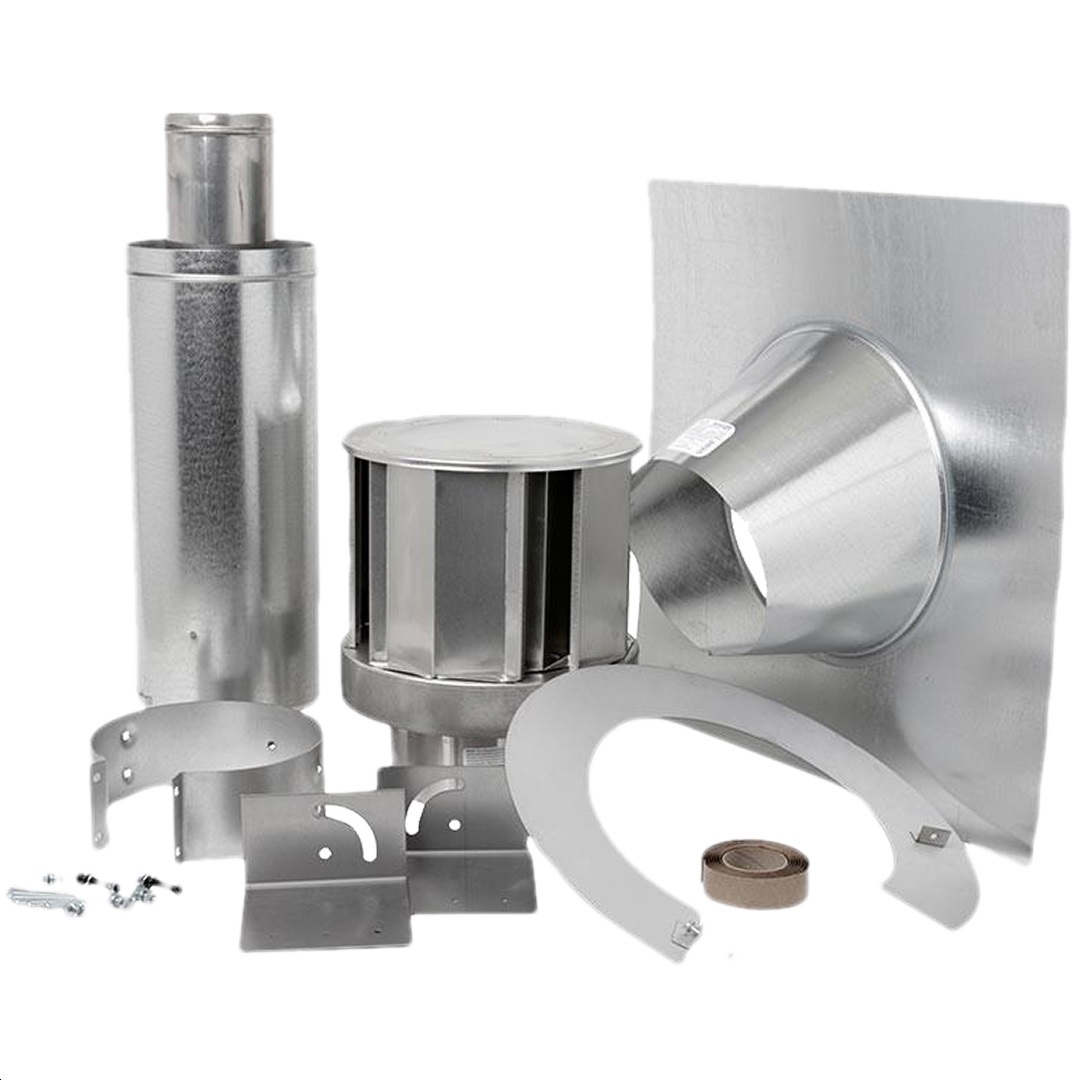
Choosing the Right Venting System
Assessing Your Needs
Choosing the right venting system for your gas fireplace involves assessing your specific needs, including the installation location, building structure, budget, and personal preferences. Consider the benefits and limitations of each venting system to determine which one best meets your requirements. Consulting with a professional can help ensure that you make an informed decision.
Evaluating Installation Options
Evaluate the installation options for each type of venting system based on the layout of your home and the available venting paths. Direct vent fireplaces offer the most flexibility in installation, while natural vent fireplaces require a vertical flue. Ventless fireplaces provide the greatest flexibility but may require additional safety considerations. Hybrid systems offer a combination of options for versatile installation.
Considering Energy Efficiency
Energy efficiency is an important factor to consider when choosing a venting system. Direct vent fireplaces are known for their high efficiency, while ventless fireplaces also offer efficient operation with instant heat. Natural vent fireplaces may have lower efficiency due to heat loss through the chimney. Evaluate the efficiency ratings of each system to determine the best option for your heating needs.
Safety and Compliance
Ensure that the chosen venting system complies with local building codes and regulations. Safety should be a top priority, and proper installation and maintenance are essential to prevent hazards. Consult with a professional installer to verify that the venting system meets all safety requirements and is installed correctly.
Budget Considerations
Consider the initial cost of the fireplace and venting system, as well as the long-term operating and maintenance costs. While some venting systems may have a higher initial cost, their efficiency and performance benefits can result in long-term savings. Evaluate the total cost of ownership to make a cost-effective decision.
Consulting with Professionals
Consulting with a professional fireplace installer or HVAC technician can provide valuable insights and guidance in choosing the right venting system. Professionals can assess your home’s layout, evaluate your heating needs, and recommend the best venting options based on your specific requirements. Their expertise can help ensure a successful and safe installation.
Common Mistakes to Avoid
Incorrect Venting System Selection
One of the most common mistakes is selecting the wrong venting system for your fireplace and home. Each type of venting system has specific requirements and limitations, and choosing the wrong one can lead to installation challenges, inefficiency, and safety hazards. Always assess your needs and consult with a professional to choose the appropriate venting system.
Improper Installation
Improper installation of the venting system can compromise the performance and safety of the gas fireplace. This includes incorrect vent pipe connections, inadequate clearances, and insufficient sealing around the vent. Hiring a professional installer with experience in gas fireplace venting can help ensure that the installation is done correctly and safely.
Neglecting Regular Maintenance
Neglecting regular maintenance of the venting system can lead to blockages, reduced efficiency, and safety hazards. Regular cleaning of the vent pipes, inspection for damage, and adherence to the manufacturer’s maintenance guidelines are essential for the safe and efficient operation of the fireplace. Schedule annual inspections by a professional to address any potential issues.
Ignoring Local Building Codes
Ignoring local building codes and regulations when installing a gas fireplace and venting system can result in fines, legal issues, and safety hazards. Always ensure that the installation complies with local codes and obtain any necessary permits. Consulting with a professional installer who is familiar with local regulations can help ensure compliance.
Overlooking Safety Features
Overlooking the importance of safety features, such as oxygen depletion sensors (ODS) and carbon monoxide detectors, can pose serious health risks. These features are essential for ventless fireplaces and should be properly installed and maintained. Ensure that your fireplace is equipped with the necessary safety features and that they are functioning correctly.
Inadequate Ventilation
For ventless fireplaces, inadequate ventilation in the room can lead to poor air quality and increased levels of combustion by-products. Ensure that the room has proper ventilation and that the fireplace is not operated in small, enclosed spaces without adequate airflow. Follow the manufacturer’s guidelines for safe operation and ventilation requirements.
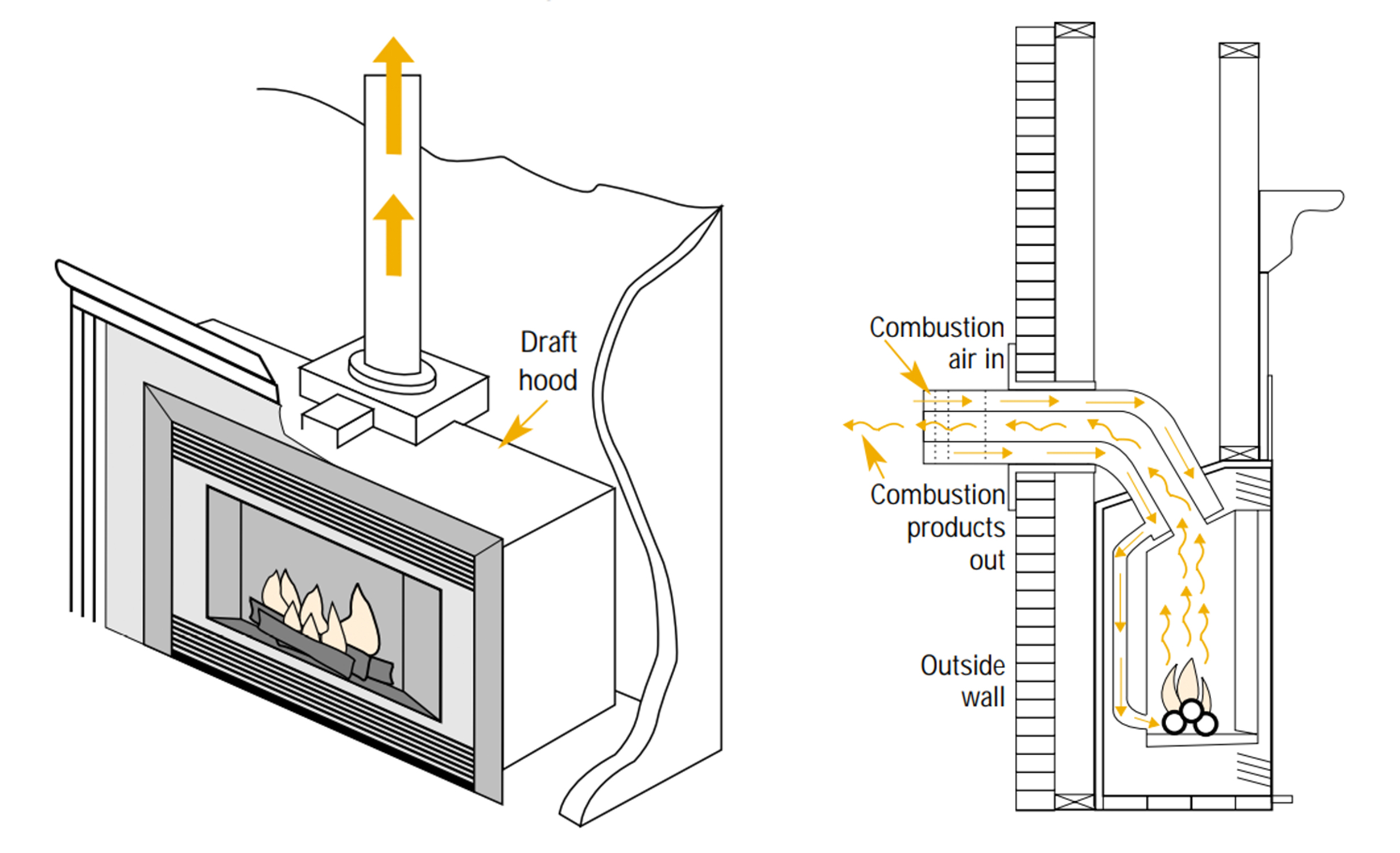
What is the most efficient type of gas fireplace venting?
The most efficient type of gas fireplace venting is typically the direct vent system. Direct vent fireplaces use outside air for combustion and expel exhaust gases outside, resulting in high efficiency and minimal heat loss. This sealed combustion system prevents drafts and maintains indoor air quality, making it an energy-efficient option for homeowners.
Can I install a gas fireplace without a chimney?
Yes, you can install a gas fireplace without a chimney if you choose a direct vent or ventless (vent-free) fireplace. Direct vent fireplaces can vent horizontally through an exterior wall, eliminating the need for a chimney. Ventless fireplaces do not require any venting, making them suitable for installations where a chimney or flue is not feasible.
Are ventless gas fireplaces safe to use?
Ventless gas fireplaces are designed to operate safely and are equipped with safety features such as oxygen depletion sensors (ODS) that automatically shut off the fireplace if oxygen levels drop below a safe threshold. However, they do release combustion by-products into the room, so proper ventilation is essential. Follow the manufacturer’s guidelines and ensure that the room has adequate ventilation to maintain safe air quality.
How often should I clean and inspect my gas fireplace venting system?
The venting system of a gas fireplace should be cleaned and inspected annually to ensure safe and efficient operation. Regular maintenance includes cleaning the vent pipes, inspecting for blockages or damage, and checking the fireplace components for proper function. Professional inspections are recommended to address any potential issues and maintain the performance of the fireplace.
Can I convert a wood-burning fireplace to a gas fireplace with venting?
Yes, it is possible to convert a wood-burning fireplace to a gas fireplace with venting. This conversion typically involves installing a gas insert or a gas log set and connecting it to a suitable venting system. The existing chimney can often be used for venting, but it may need to be relined or modified to accommodate the gas fireplace. Consulting with a professional installer can help ensure a successful and safe conversion.
What should I do if I smell gas near my fireplace?
If you smell gas near your fireplace, it is important to take immediate action to ensure safety. Do not use the fireplace or any electrical devices in the area. Open windows to ventilate the room and evacuate the home. Contact your gas supplier or emergency services to report the gas leak and have a professional inspect and repair the fireplace and gas lines. Regular maintenance and inspections can help prevent gas leaks and ensure safe operation.

Related Posts:
